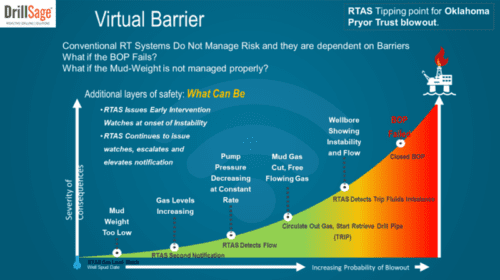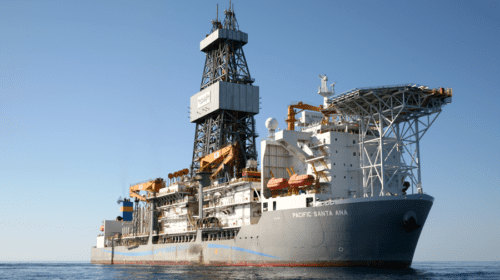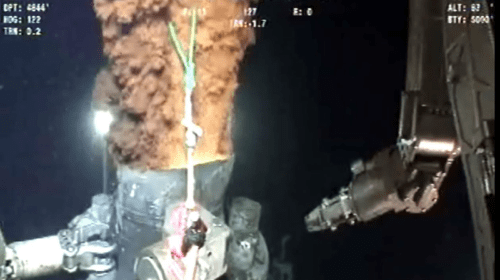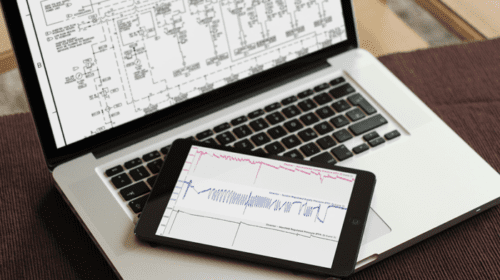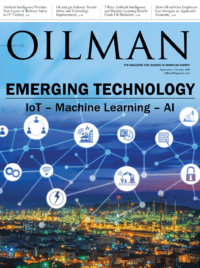In the late 1990s the oil and gas industry worked overtime against the fear of what would happen when the clocks struck midnight in the year 1999 ushering in 2000. No one knew what would happen with computer clocks designed only through years ending in 99. The news media covered the new millennium like an approaching hurricane. The Y2K fear and frenzy seems so distant in light of the many global crises that our best and brightest engineers have had to deal with in the last two decades. From 9/11 and Hurricanes Katrina, Rita, Ike, Sandy and Harvey to cyber threats, global recessions and a change in demographics. In 2019 adapting a radically different approach with AI (Artificial Intelligence) and IoT (Internet of Things) is not just a method of reducing downtime, increasing profits, and creating security in the midst of unexpected crises – it is being recognized as mandatory. The major oil and gas operators have accepted Oil and Gas 4.0 as the only acceptable path forward for sustainable and high security refinery and plant operations.
Mark Anderson began his career with Shell Oil in 1981 and has led robotics and automation in drilling globally for Shell and with SPE (Society of Petroleum Engineers). Currently Anderson, a consultant and managing member of Anderson & Spilman, LLC, says, “Managing robotics and automation holds the promise to take humans out of harm’s way. The issue on uptake to date in the oil field is the variety of tasks that humans are required to do. There is not the high degree of repetition like in a factory setting. Automation is a bit of an ‘all or nothing’ proposition in terms of removing people from the worksite. If you automate part of a position, the individual, who is still required to do those tasks not yet automated, will need to be present at the worksite.” Mr. Anderson has been working with universities and young professionals in global competitions to make the transition to robotics easier.
Once a disaster or crisis is elevated to BREAKING NEWS, the response has usually been long investigations and new procedures for safer operations or new technologies. But in this age of disruption the need for proactive and interactive Process Safety Management and Quantitative Risk Assessment and Mitigation in the design phase has the ability to insure financial stability for the investors.
Social License to Operate
“You don’t get your social license by going to a government ministry and making an application for one, or simply paying a fee. … It requires far more than money to truly become part of the communities in which you operate.”
– Pierre Lassonde, President of Newmont Mining Corp., 2003
Perhaps what happened in the summer of 2019 illustrates to what extent breaking news can also break an industry.
According to reporting by the Philadelphia Inquirer on June 21, 2019, the night shift at the PES Refinery responded immediately to the blast that shook communities several miles away. This is one of the few refinery disasters where one woman at 4:00 a.m. working the boards did everything correctly and, together with more than 100 workers, literally saved the city of Philadelphia. During the first 20 minutes, as refinery employees scrambled through fireballs that lit up the sky turning night into daylight for miles around, many of the lead workers wondered how many people they would have to bury. Then word arrived that every single worker had been accounted for and they simply had to fight the fires and get control of the flow of chemicals.
On June 26th while these same employees scrambled cleaning up the site to get the operation back on line they were even more stunned to learn on breaking news that PES would close the refinery. No one could have imagined that with only five minor injuries and no harm to the community the refinery workers would be faced with being out of work.
What AI solutions, IoT and companies like SparkCognition potentially can offer will not only save the environment, the lives of workers and surrounding communities, but the actual refinery itself. In this season when the oil and gas industry has lost the public trust, innovative software and IoT technology are the key to refinery survival.
The road map to weaving advanced software and AI technology into refineries and chemical plants might have seemed expensive and extremely complex for everyone from the C-Suite (the blunt end of the safety spear) on down through the VP and middle management in 2010. But, in light of more than 35 major refinery and chemical plant disasters in the United States since 2015, keeping those who work onsite and the surrounding communities safe is tied directly with keeping the license to operate from all stakeholders: investors, partners, employees, the community and local, state and federal governments. Oil and gas companies recognize the social license to operate (SLO) is just as vital as any permit from a governing authority.
Making the Energy Transition from Disaster to High Tech Solutions – Like a Moon Shot for The Oil and Gas Industry
Implementing innovative change is never easy in any industry but in 2019 capturing multiple data streams of information from specific vessels, pumps and compressors allows for keeping on top of preventative and corrective maintenance, as well as real time hazard analysis and risk assessment in rapidly changing weather conditions and corporate changes. The benefits of digital solutions reduce downtime and prevents equipment surprises.
The energy industry is undergoing a state of disruption. Historically, energy companies who survived the booms and busts and major transitions survived or failed based on whether they looked at disruption as a threat or an opportunity. Shell, BP and ENI are leading the way by using analytics and advanced machine learning to capture huge streams of data, much of which has gone unused. The organizations who jump on Oil and Gas 4.0 and surf the waves of change with the latest AI and IoT software solutions will offer just in time decision making and add new layers of safety protection not humanly possible otherwise.
By streaming information in real time to the key decision makers, front line workers have a second set of eyes to alert them to a critical action before a combination of small events balloons into a crisis. It has taken decades for accurate tornado alerts to send messages to homes, business and governments so that all stakeholders can respond proactively. Introducing AI and advanced machine learning and software solutions promises financial savings as well as salvation for the USA’s aging refineries and chemical plants.
Phillipe Herve, Vice President, SparkCognition, says the money and time invested in AI and machine learning in 2019 is a drop in the bucket when compared to how much money can be saved by preventing unnecessary downtime and lower insurance premiums. The technology can also help engineers in the design phase make more informed decisions to create and operate facilities that will be far more productive in the entire lifecycle of the facility and increase production.
Herve, an engineer, says he was skeptical at first. But upon further investigation and experience with different sectors of the oil and gas industry, he has invested his future professional life in helping the energy industry move toward the most advanced levels of digital and software solutions. He notes that AI and machine learning have already been proven on offshore drilling rigs and production platforms, but now solutions such as those offered by his company SparkCognition are already being tested in refineries and chemical plants in 2019.
Change is always difficult at any point in history. Herve says the three main challenges to fully implementing AI technology and software include radical change in:
- Technology – new and different. Oil and gas refineries and chemical plants generate enormous amounts of data, but until recently it has been difficult to use it quickly due to the amount of time required for data scientists to clean it up and find only the information that is relevant to solving a particular problem for a specific piece of equipment. This is where solutions like Darwin come in to help make the transition almost seamless for both the engineers and data scientists and those in management and at the worksite.
- Change in Process – Without big data and AI, refineries and plants have traditionally had to react after disasters to create innovative solutions. Herve says, “With AI we may be able to detect a slight change faster than a human but this is probably not where the full power resides. AI is capable of detecting combinations of sensors which are abnormal to a particular asset. Every single sensor provides a reading which is within range and not alarming by itself. The combination of value reported by multiple sensors is abnormal which is something humans have great difficulty in detecting. Some rule-based algorithms have been written for some assets to catch these combinations but the rule-based approach only works for abnormalities which are “planned.” The true power of AI comes when the system is automatically and intelligently capable of detecting an anomaly even if the anomaly has not been considered as a possibility. Expanding the concept, with Automated Machine Learning, you can detect any anomaly, regardless of whether it was considered a possibility or not without having to write hundreds or thousands of rules to consider each possible use case.” In 2019, the software solutions proven with a client in a few months go beyond what a team of human engineers could have accomplished in a few years in the past.
- Organizational Culture – The interface between different ladders in an organizational chain of command have always proven most challenging. Organizational culture is defined as “how people work” with many people explaining “this is not how we do things around here.” Resolving the fragile interface between the seasoned workforce and the vision of the data science engineers will require a space for dialogue and candor in the feedback loops. The words “Safety in the Work Place” have been chanted like a mantra to the point where many of those on the sharp end of the safety spear have come to feel that those in the C-Suite are not providing a safe space for them to voice their fears and concerns. Investigations by the U.S. Chemical Safety Board have consistently uncovered failure in organizational system risk assessment after a disaster. There is a lack of feedback loops for workers to send bad news up the chain of command in real time. Machine learning and addition of new software solutions will require listening protocols for sharing concerns of the workforce.
Case studies from companies that have introduced AI prove that with buy in from the top to the bottom of the organization, operations can demonstrate that the introduction of advanced software can be streamlined to make life easier for everyone. Once engineers and plant managers give various software suites a test drive in a plant, the front-line employees see how the algorithms help them reduce the amount of time spent on troubleshooting and repairs and allow a proactive response to daily operations. The software sends out alerts when preventive or predictive maintenance needs to be addressed sooner. Just a couple of years ago Herve says the first editions of AI allowed plant operators to see AFTER a breakdown what should have been done six months or six weeks before the event. This latest edition of algorithm prevents the breakdowns BEFORE they happen.
Texmark Chemicals put SparkCognition sensors on one of their pumps in 2019. The onsite workforce found their ability to operate between the sensors and the actual equipment enhanced their ability to maintain their equipment while providing a new understanding of it. The transition was easier than anyone expected. Doug Smith, CEO, Texmark Chemicals, Inc. is more than simply a satisfied customer. Smith says, “SparkCognition’s ability to deliver reliable, AI-based predictive analytics helps the people working with and on the equipment not only know what is happening but, more importantly, what is going to happen and when. This is a game changer. Not only does this improve plant safety, but it increases productivity by reducing unplanned downtime.”
Smith is encouraging his competitors and industry colleagues to become early adopters of AI and Machine Learning.
As our oil and gas industry enters the next decade, sustaining the license to operate and keeping the public trust will depend on investing in the innovations and technology that keep refineries and plants from becoming the latest story on breaking news.
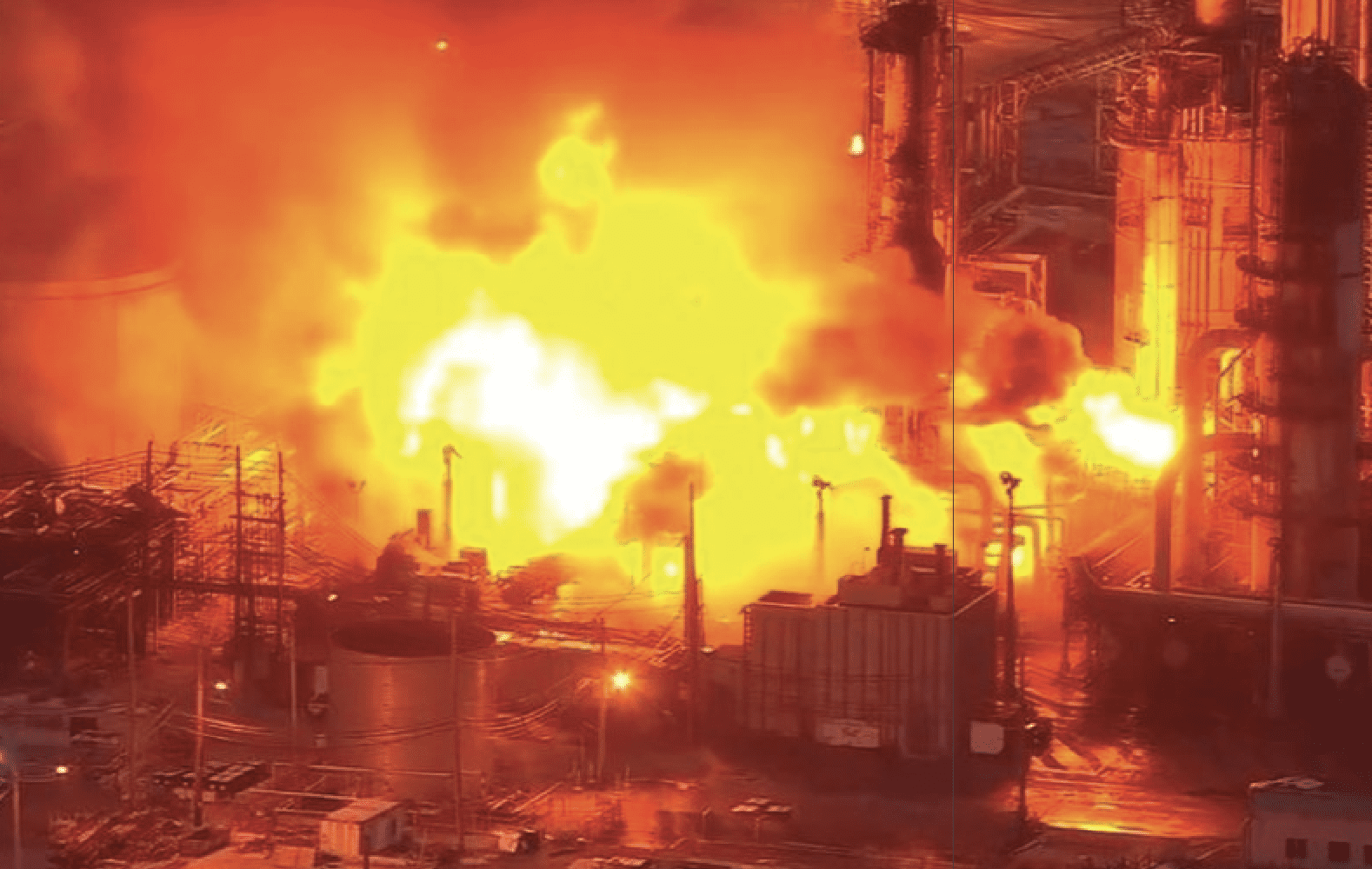
Philadelphia, Pennsylvania, June 21, 2019. WCAU-TV/NBC via REUTERS
Lillian Espinoza-Gala, owner LEG Exploration Education, served on the steering committee for National Academy of Science Offshore Worker Empowerment workshop held in Houston in January 2018 and a section of her Macondo Research is published in Chapter 2 of the proceedings. She currently serves as a Membership Chair on SPE International Human Factors Technical Section Board.






